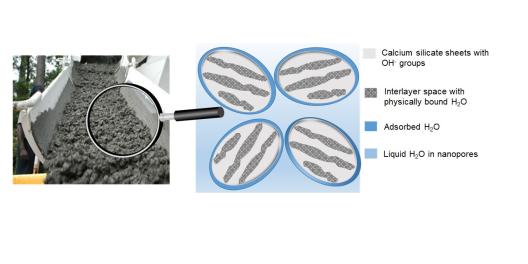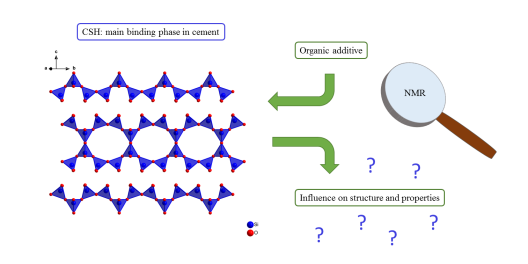NMR in Energy Storage Research (Joop Enno Frerichs)
NMR spectroscopic investigations of intermetallic phases can provide important mechanistic insights into energy storage and catalysis. Especially in the field of lithium ion batteries, NMR spectroscopic measurements can be used to elucidate mechanisms, characterize materials and consequently improve existing technologies. In addition, a targeted combination of NMR experiments and in situ methods can create new possibilities for the investigation of battery components.

© jef Mechanistic NMR and EPR Studies on Photonic Materials (Lena Marie Funke)
The structure of photo-thermo-refractive glasses and polycrystalline phosphors are to be clarified taking account of the influence of chemical and physical variations. Standard and modern pulsed magnetic resonance techniques (NMR and EPR) are used to probe formed nanocrystals and defect centers.

© lf Investigation of Cementitious Materials with 1H Low-field NMR (Regine Hammer)
Cement is an important raw material used in a variety of industrial and private sectors. The constitution of the microstructure of the cement, which is responsible for its stability, has not yet been fully clarified. In order to gain a better understanding of the material, thermogravimetric analysis (TGA) and low-field NMR spectroscopy are used to obtain a direct insight into the distribution of the microstructure. The hydration reaction of cement is monitored in long-time experiments period to monitor the formation and evolution of the microstructure.

© rh Calcium Silicate Hydrate phases (Sandra Haverkamp)
Synthetic calcium silicate hydrate phases (CSH phases) are investigated with the aim of reducing carbon dioxide emissions during production and the consumption of cements in the construction industry. CSH phases are mainly responsible for the sturdiness and are thus in focus of cement research. The influence of organic additives on the structure of the CSH phase is investigated by solid-state NMR and other methods.
(in cooperation with A. Geppert (HBRS/Uni Siegen), Prof. Dr. R. Trettin (Uni Siegen), Prof. Dr. S. Witzleben (HBRS); BMBF Project No. 03FH016I3)
© sh 
© bmbf Solid-state NMR and cw-EPR characterization of new materials containing boron Lewis acids as active center (Robert Knitsch)
Solid state NMR and cw-EPR characterization of new materials with focus on boron centered Lewis acids as reactive center (Robert Knitsch)
My research deals with various new organic and inorganic materials in which boron-centered Lewis acids play a decisive role. Hydrogen catalysts and storage as well as boron-doped conductive polymers are characterized using one- and two-dimensional solid state NMR experiments supported by DFT calculations. On the other hand, paramagnetic boron species are investigated by suitable EPR methods.
© rk Solid-State NMR of Acid Sites in non-classical Zeolites (Christian Schröder; AK Koller)
The research focus is on the investigation of acidic (and thus catalytically active) centers in non-classical zeolites, a group of nanoporous aluminosilicate compounds. Classical zeolites, e.g. zeolite Y, have been used for decades as important catalysts and adsorber materials for industry. However, the abundance of new non-classical zeolite skeleton structures may enable new important reactions and processes. Solid-state NMR methods help to find out the positions, configurations and other important properties of the acidic centers in these materials, which have not yet been examined spectroscopically.

© cs Aluminium-Phosphor based frustrated Lewis Pairs (Anna-Lena Wübker)
Frustrated Lewis pairs (FLP´s) are mainly used as catalysts in the decomposition of hydrogen or other small molecules. For this reason, the characterization of this FLP´s is very interesting, especially since the aluminium leads to very broad NMR spectra due to different interactions. In liquid NMR, aluminium spectra are very difficult to measure due to these interactions, which is why there are also many problems in solid-state NMR, which can, however, be solved or at least minimized using special measurement methods

© a-lw
